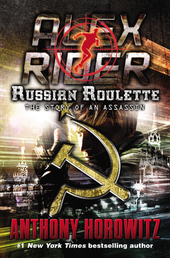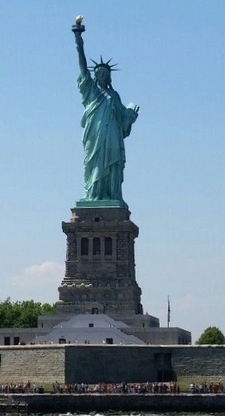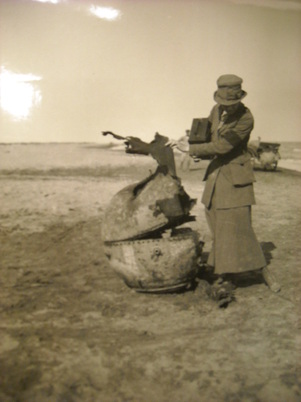 You might not be surprised that boys don't read as much as girls. You might even think that's just the way boys are. Research consistently shows they have lower reading skills and a worse attitude about books. The most recent studies come from the United Kingdom. At age seven, there's already a gender gap of 7 percent fewer boys than girls reading at the expected level. By age 11, it's 8 percent; by age 13, the gap has increased to 12, and in high school it reaches 14. And that's for the boys who have not dropped out of school. Last year the United States dropout rate reached its highest level in nearly 40-years and more boys quit than girls in every state in the nation. But it's wrong to think poor reading is inherent in boys, and there's much we can do to help boys read more and better. For one, we can help boys discover that reading is fun. They may not gravitate to novels like girls, but there's a lot of new and exciting reading material to interest boys of all ages. See lists by topic here. Librarians are excellent at knowing what books appeal to boys, and they're up-to-date on reading options for boys. That's their job. I should say, used to be their job. The pandemic loss of school librarians due to budget cuts in the last five years means boys have very little help in finding something they might enjoy reading. I was incredibly demoralized when we lost the battle for librarians in my kids' school district. I cannot imagine attending a school without a librarian. It's like a car without headlights. And no spark plugs. Sheila May-Stein writes a lovely story on her blog about how to approach a boy about a book. Click here for Random Thoughts of an Outlaw Educator.  A fifth grade teacher in Forth Worth, Texas, Donalyn Miller, motivates her middle school students to read 40 or more books a year. "I'm invited to speak in schools that want to improve their test scores, but the kids don't have books to read and parent volunteers run the library. They don't get it.... "...The manner in which schools institutionalize reading takes this love away from children. As instruction becomes limited to test-taking drill and kill, we are slowly strangling the joy of reading out of students, and without quality instruction in how to read well, we are narrowing their possibilities as readers forever," Donalyn says.  Anthony Horowitz writes books that many boys devour. His series ALEX RIDER about a teenage spy has sold 12 million copies worldwide. Anthony says, "I can tell you if a school has a good library five minutes after entering it... It is in the eyes of the kids." We didn't have a school librarian in my elementary school, but the public library was housed in our school building, and classes made regular trips down the hall to use it. Mrs. Orr, the librarian was one of the strongest pillars in my childhood. I wish every child had someone like her just down the hall. Was there an important librarian in your life? What can we do to help kids, especially boys, find something to read that will help instill a lifetime habit?  Replica of Liberty's Face Replica of Liberty's Face "Give me your tired, your poor, Your huddled masses yearning to breathe free," My visit to the Statue of Liberty earlier this week inspired me to learn more about the woman who wrote those famous words. They really struck me, almost to tears when I first heard them as a child. I marvel at them again now, and at the power of poetry to move people’s emotions and stir them to action. Where does such power come from? The author of the words, Emma Lazarus was born in New York in 1849 to a wealthy Jewish family. Her ancestors were Sephardic Jews who fled the Spanish Inquisition for Colonial America. Emma was a curious, bright girl who loved reading, and started writing poetry at a young age. Living in 19th Century America, she had at least two strikes against her. She was a woman, and she was Jewish. However, her father fully supported her writing, and self-published her first volume Poems and Translations: Written Between the Ages of Fourteen and Sixteen.  T. Johnson - The New York Historical Society T. Johnson - The New York Historical Society At some point her poetry impressed Ralph Waldo Emerson and they began a long-term correspondence. In 1883, during the drive to raise money to build the pedestal for the Statue of Liberty, Emma wrote “The New Colossus”. She’d been hearing news of the vicious anti-semitic pogroms in Russia, and as Jewish refugees streamed into the U.S. from Eastern Europe, Emma was shocked. Poor, sick, and uneducated, they were nothing like her upper class New York social circle. Many well-established Jewish Americans feared these immigrants would reflect badly on them and didn’t want anything to do with the newcomers. But Emma take a break from writing to help the Russian Jewish immigrants, giving of her own money and helping raise funds to feed and clothe them. She set up job training in the industrial trades, which grew into the Hebrew Technical Institute. And, she wrote poems and essays about their plight. "Until we are all free, we are none of us free," she said.  Throughout the 1870s and early 1880s, many of Emma's poems appeared in American magazines and newspapers, including the New York Times. Her poetic dramatization of Richard Reinhard's 1877 Der Tanz zum Tode, celebrated the courage and faith of 600 Jews who were killed, many burned to death, in Nordhausen, Germany, in 1349. The massacre was one of hundreds throughout Europe during the plague, where Jews were accused of causing the Black Death. Emma’s writings also spoke to the importance of literature to culture and the needs and rights of the artist. But none of her work became as well-known as the poem which is engraved in bronze at the Statue of Liberty. Once posted at the foot of the statue, it has since been moved inside for protection against the elements. The New Colossus by Emma Lazarus  Not like the brazen giant of Greek fame, With conquering limbs astride from land to land, Here at our sea-washed, sunset gates shall stand A mighty woman with a torch, whose flame Is the imprisoned lightening, and her name Mother of Exiles. From her beacon-hand Gloves world-wide welcome; her mild eyes command The air-bridged harbor that twin-cities frame. "Keep, ancient lands, your storied pomp!" Cries she With silent lips. "Give me your tired, your poor, Your huddled masses yearning to breathe free, The wretched refuse of your teeming shore, Send these, the homeless, tempest-tossed to me: I lift my lamp beside the golden door. Emma's poem gives me the shivers! It's message was never more important than it is today. Does it have any special significance for you? If so, I'd love to hear your story.  Today, I'm thrilled to tell you about a new book, which is especially close to my heart because as a young woman in the early days of my career as a television news reporter, I briefly entertained the dream of working as a war correspondant. REPORTING UNDER FIRE:16 DARING WOMEN WAR CORRESPONDENTS AND PHOTOJOURNALISTS, by Kerrie Logan Hollihan, is filled with historical photos, newspaper clippings and personal stories from the women journalists themselves. The publisher Chicago Review Press describes the women chronicled in the book who risked their lives to tell wartime stories:  Each woman—including Sigrid Schultz, who broadcast news via radio from Berlin on the eve of the Second World War; Margaret Bourke-White, who rode with General George Patton’s Third Army and brought back the first horrific photos of the Buchenwald concentration camp; and Marguerite Higgins, who typed stories while riding in the front seat of an American jeep that was fleeing the North Korean Army—experiences her own journey, both personally and professionally, and each draws her own conclusions. Yet without exception, these war correspondents share a singular ambition: to answer an inner call driving them to witness war firsthand, and to share what they learn via words or images. Photojournalist Helen Jones Kirtland looking at a spent landmine,probably near Ypres, Belgium, 1919. (Library of Congress)  Kerrie Logan Hollihan Kerrie Logan Hollihan The book just came out two weeks ago, and I'm so pleased to introduce you to Author Kerrie Logan Hollihan My thanks to Mary for asking me to guest blog this week. She asked me to focus on courage, which got me thinking about the sixteen women I profiled. At that point I realized I never especially characterize these women as courageous, though of course they are or were. Other attributes come to mind: smart, articulate, resourceful, brave, bold, brash, stubborn. But were I to choose a single adjective to best describe the women in my book, it would be: Authentic. Authentic. That’s the “keyword” I’d plug in for every one of them. Here’s how I explain my choice in the foreword to Reporting Under Fire: When my daughter was a junior at [an all-girl high school], someone wrote a lovely quote on a poster during pep week. It was from Judy Garland…It said: “Always be a first-rate version of yourself, instead of a second-rate version of somebody else.” … Garland’s words came to me as I was putting the finishing touches on this book. In looking over the profiles I’d researched and written over nearly a year, I was struck by how each of these of these women is (or was) so much her authentic self….  To be authentic takes courage. To know who you truly are and to live your life acting on that self-awareness takes courage. You might be a war reporter who risks it all to do what you are called to do. Janine di Giovanni (now Middle East editor of Newsweek) “bears witness” to war’s impact on ordinary people. Sigrid Schultz was the first reporter to warn that Adolf Hitler was building concentration camps and isolating German Jews. Chicago Daily News reporter Georgie Anne Geyer was marked for death in Guatemala by the White Hand, ultra-right-wing terrorists. Or you might be a big city dweller like my daughter, grown up now, who sees how authenticity and self-awareness matter in the jobs and private lives of modern women, surrounded as they are by bottom-liners and bottom-feeders. How to live courageously and meaningfully in a lousy world. How to be a first rate version of herself. Photo below: Correspondent Martha Raddatz (right) in Afghanistan, May 2011, Producer Ely Brown (left) Courtesy Raddatz  ABC Chief Global Correspondent Martha Raddatz is a case in point: smart, plain-speaking, and unpretentious. She told me she loved to read biographies as a kid, that “…maybe that’s the first inkling you want to live a life that’s not the one you’re living.” Martha left college to take a news jobs -- something she doesn’t recommend to others. That was about forty years ago, and she’s been reporting ever since. She thrives on what she does, as she said in a talk at her son’s college. “The one reason more than any other that I love the news business is because I learn something every single day. Every single day.” Martha Raddatz is the real deal, as is every single woman in my book. Authentic. Courageous. Thank you, Kerrie. And thank you for writing an excellent and exciting book on this important and inspiring topic. I appreciate the quote from Martha Raddatz because that is also one of the reasons I loved working in the news business, and part of why I'm so happy writing books for kids. I'm hungry to learn, and writing allows me to share the interesting things I learn. For more on REPORTING UNDER FIRE, here's what School Library Journal has to say. "A well-researched and riveting book...the text is chock-full of their daring exploits—such as Sigrid Schultz cohosting an engagement party for top Nazi Hermann Göring—all in the name of landing their stories. Not only do readers gain a healthy respect for each reporter, but they also gain insight into global history. As such, the book reads like a narrative time line of world history, women's rights, and the field of journalism as a whole." This is the kind of book that should be in every school library. I'm calling my local district to see if they have it. I challenge you to do the same.  This past week I had the extraordinary privilege of speaking to WWII POWs surrendered on Bataan and Corregidor and held prisoner until the end of the war. Only a few of the men remain alive now, some seventy years after the war.  The POWs, their wives, children, friends and relatives gather each year to commemorate the sacrifice and service these men gave for our country. They endured starvation and torture on the Bataan Death March, in prison camp, hell ships and Japanese slave labor camps.  Totally honored & thrilled to sign a book for Bataan Death Survivor Phillip Coon Totally honored & thrilled to sign a book for Bataan Death Survivor Phillip Coon Mr. Coons, an infantry machine gunner in the army, was one of six Muscogee Creek members who fought in the Battle of Bataan and were forced on the Bataan Death march. Three of the men died in captivity. For more of Mr. Coon's story, click here. The group of POWs that began meeting in the late 1940's has now morphed in to the Descendants Group--American Defenders of Bataan and Corregidor Memorial Society. One of the group's goals is to keep alive the story of these men's courage and resilience in the Philippines when the Japanese attacked the Islands shortly after bombing Pearl Harbor. They especially want to get the word out to young people. History books may touch briefly upon the subject, but stories from the survivors have more impact. That was Shayna Ross a student at Yamhill-Carlton High School in Oregon. I spoke with her at a Veteran's Day celebration where she heard first hand the experiences of American defenders of Bataan and Corregidor.
A new documentary on the topic was screened at the ADBC convention, Never the Same: A Prisoner of War Experience. Three-time Emmy Award-winning director Jan Thompson interviewed a number of POW's for the documentary. She also uses poems, songs and art work created by prisoners in the camps to help depict the brutality they experienced. You can view the trailer here. And by the way, if you don't have your copy of PURE GRIT yet, Women's eNews published an excerpt this week. Read it here... Up next week--> a new book featuring American women war correspondents. |
I'm fascinated to discover little-known history, stories of people and events that provide a new perspective on why and how things happened, new voices that haven't been heard, insight into how the past brought us here today, and how it might guide us to a better future.
I also post here about my books and feature other authors and their books on compelling and important historical topics. Occasionally, I share what makes me happy, pictures of my garden, recipes I've made, events I've attended, people I've met. I'm always happy to hear from readers in the blog comments, by email or social media. Archives
September 2023
Categories
All
|
